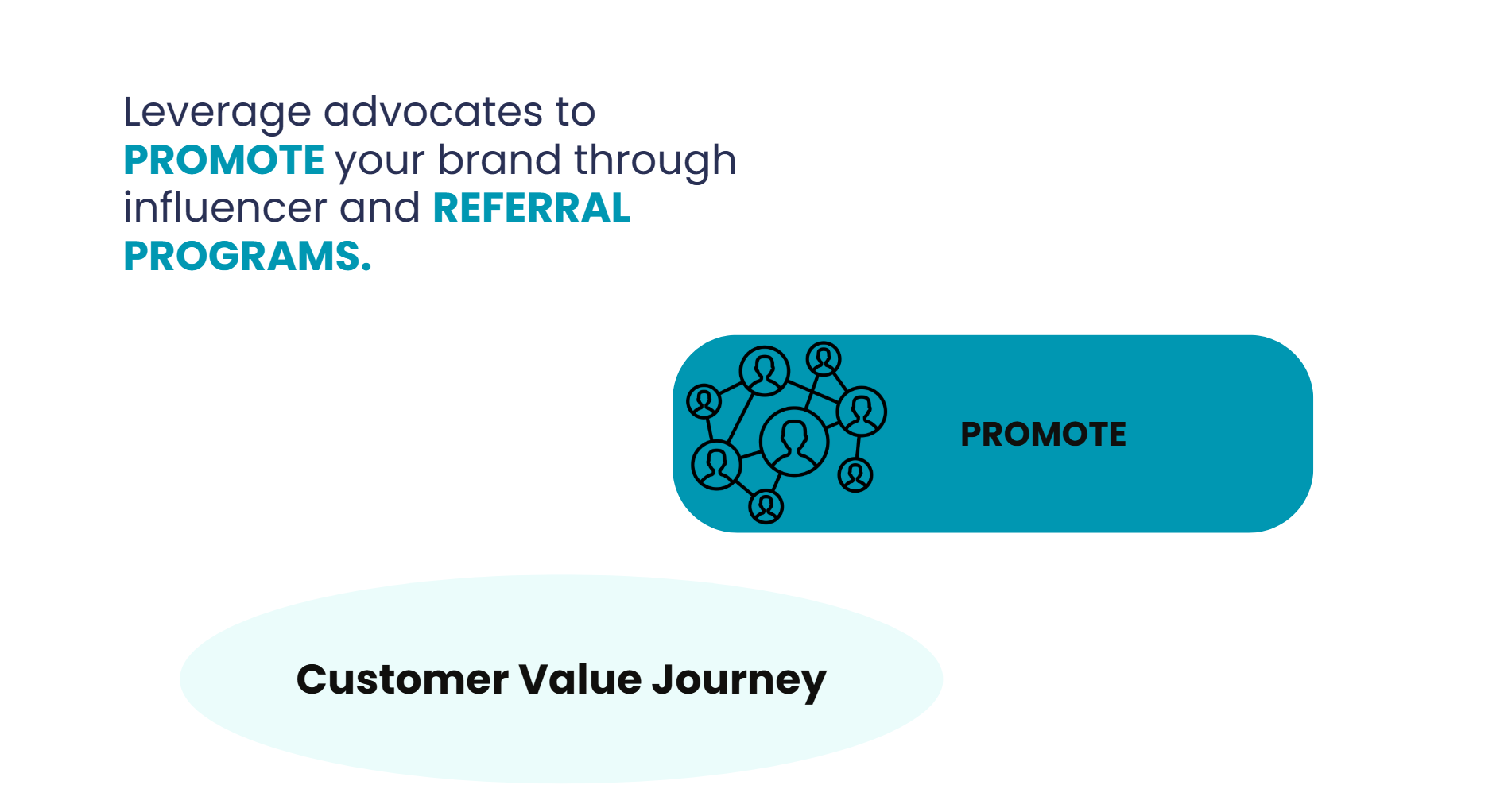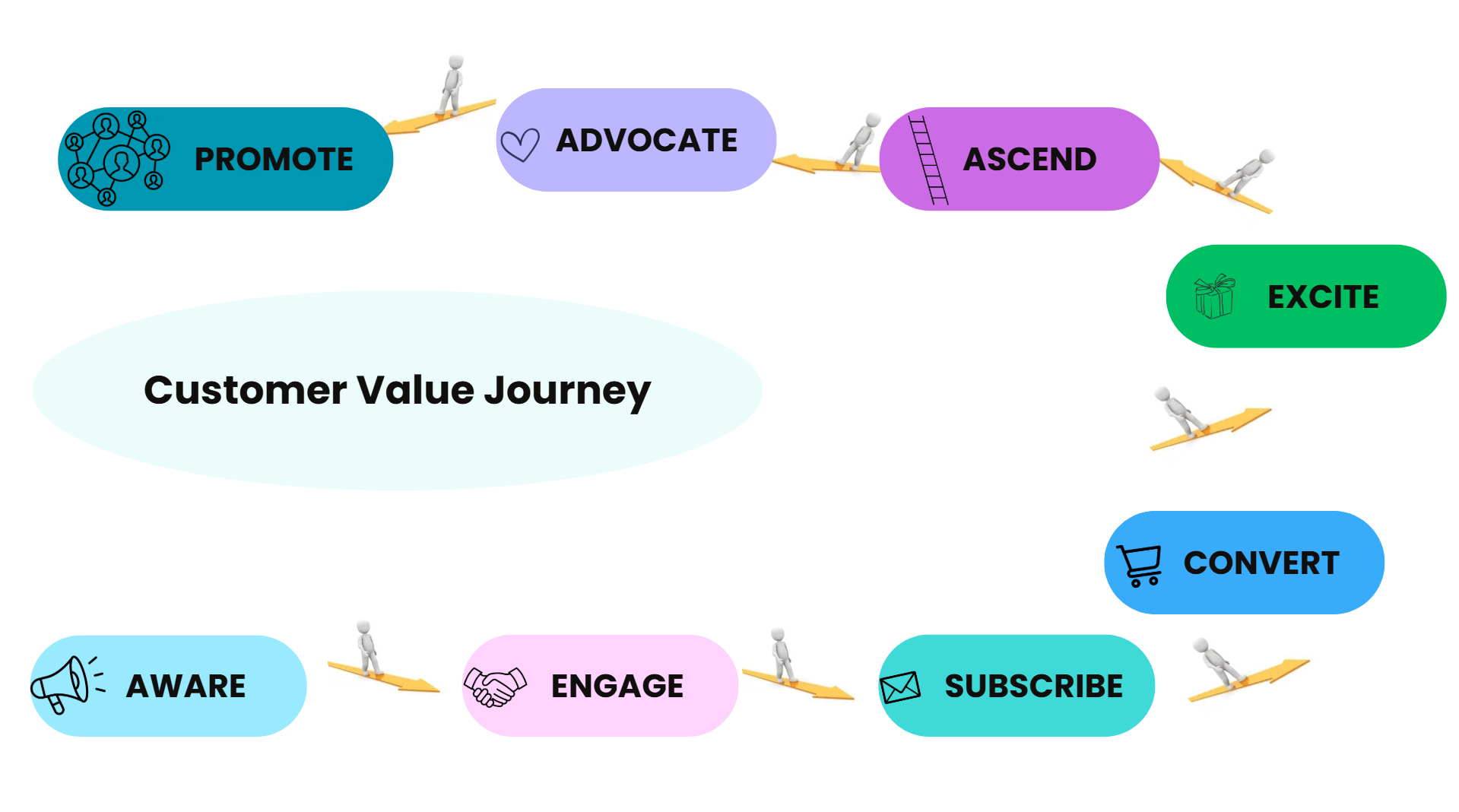The Customer Value Journey - Step 8: Promote
Promote - Welcome back and tighten your seatbelt, this is where we have our happy customers promoting you in the final step of the Customer Value Journey.

Welcome back. In the last installment, we covered the Advocate stage, where we discussed how to turn satisfied customers into enthusiastic advocates for your business.
Imagine you're still hosting the amazing party.
Are you sure you're not a party planner by trade? Your guests are ecstatic, and they’ve been singing praises about your party to everyone they meet. Now, they’re so impressed that they actively invite others to join and promote your party on social media. In the business world, this is where you turn your advocates into active promoters who spread the word about your business far and wide.
Let's look at a business example.
Imagine you run a handmade soap business in County Kerry. Your customers are thrilled with your natural ingredients, delightful scents, and beautiful packaging. They’re not just satisfied—they’re eager to promote your soaps to friends, family, and their social media followers.
To encourage promotion, you might try:
- Word-of-Mouth Marketing: Leverage the power of word-of-mouth marketing by encouraging your customers to share their positive experiences with others.
- Social Media Contests: Host social media contests where customers can share their favorite soap products story for a chance to win prizes, feature the best stories on your blog and link to them in your social media channels.
- Influencer Collaborations: Partner with influencers who align with your brand values to promote your products to a wider audience. Don't underestimate the power of a large audience. Make sure the influencer is reaching the same audience you want to reach.
- Referral Programs: Expand your referral programs to offer even more enticing rewards for customers who bring in new business.
- Promotional Campaigns:
Launch promotional campaigns that incentivize customers to share your products and promotions with their networks.
The 'talented techies' in of Right Hand Consulting are back with more insights used when working with our clients to turn advocates into active promoters. Let's see what they have to say here:
- Branded Hashtags: Create and promote branded hashtags that customers can use to share their experiences and promote your products online.
- User-Generated Content: Encourage customers to create and share content featuring your products, and highlight their posts on your social media channels.
- Ambassador Programs: Develop an ambassador program that turns your most loyal customers into official brand ambassadors who actively promote your business. This might involve making them administrators on your social media or invite them to feature on a promotional video with you.
- Email Marketing Campaigns: Use email marketing to keep your advocates engaged and encourage them to share your latest news and offers with their networks.
So, we’re leveraging word-of-mouth marketing, social media contests, and influencer collaborations to promote your business. It can be fun too.
Did you know?
Did you know that 92% of consumers trust recommendations from friends and family more than any other form of advertising? This underscores the power of word-of-mouth marketing. Additionally, businesses that implement effective referral programs can see up to a 25% increase in their customer base. Social media contests and influencer collaborations can increase brand engagement by 28%, while 74% of consumers rely on social media to guide their purchasing decisions. These statistics highlight the importance of leveraging your advocates as active promoters to reach new audiences and drive business growth.
Thank you for sticking with us through the 8 stages of the Customer Value Journey (CVJ). There's a lot to digest, and it’s crucial to understand each stage. However, we recognize that the distinctions between some stages can be a bit confusing. To help clarify and simplify, we're coming back soon with a summary blog post that will provide a high-level overview of the entire journey in one place.
Stay tuned for this comprehensive recap. Until then, happy promoting! 🚀

Customer Value Journey – Full Series
Summary:
https://www.righthandconsulting.ie/the-customer-value-journey-summary
1. Aware:
https://www.righthandconsulting.ie/customer-value-journey-1-aware
2. Engage:
https://www.righthandconsulting.ie/customer-value-journey-2-engage
3. Subscribe:
https://www.righthandconsulting.ie/customer-value-journey-3-subscribe
4. Convert:
https://www.righthandconsulting.ie/customer-value-journey-4-convert
5. Excite:
https://www.righthandconsulting.ie/customer-value-journey-5-excite
6. Ascend:
https://www.righthandconsulting.ie/customer-value-journey-6-ascend
7. Advocate:
https://www.righthandconsulting.ie/customer-value-journey-7-advocate
8. Promote:
https://www.righthandconsulting.ie/customer-value-journey-8-promote










